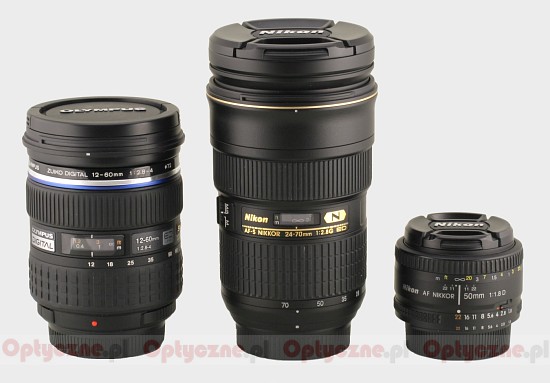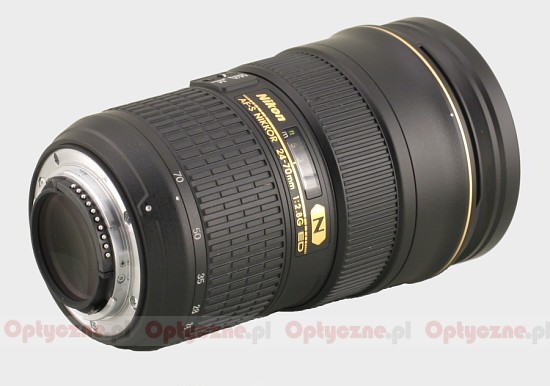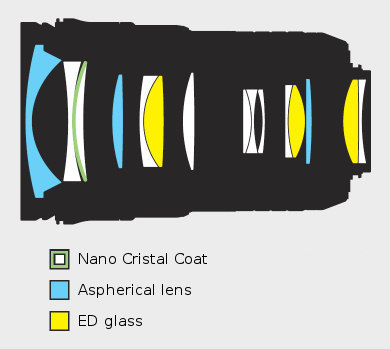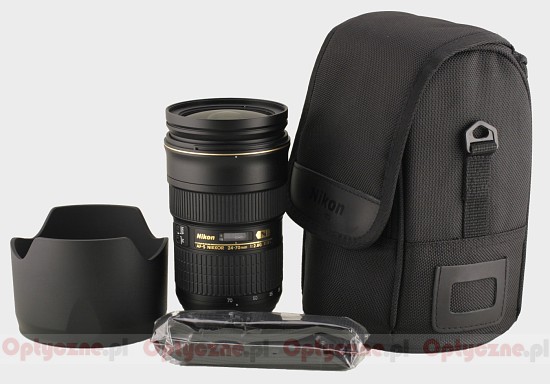Nikon Nikkor AF-S 24-70 mm f/2.8G ED
3. Build quality
 |
Starting from the side of metal mount, first we find a big and comfortable zoom ring on a solid casing also made of metal. The ring moves quite smoothly and is well-damped but in the 24-50 mm range the resistance is minimally lower than in the 50-70 mm range.
 |
Please Support UsIf you enjoy our reviews and articles, and you want us to continue our work please, support our website by donating through PayPal. The funds are going to be used for paying our editorial team, renting servers, and equipping our testing studio; only that way we will be able to continue providing you interesting content for free. |
- - - - - - - - - - - - - - - - - - - - - - - - - - - - - - - - - - - - - - - - - - - - - - - -
Further on there is a distance scale behind a small window and on the left from it – a focusing mechanism mode switch (M/A or M). Then we see a manual focus ring which, if you ask me, is definitely too loose. Even not very strong, accidental touch or brush makes the focus “jump” its position quite significantly.
Inside the lens we can find 15 elements positioned in 11 groups which makes the Nikkor one of the simplest devices in this class. The Canon for instance features 16 elements and the Zeiss, produced for Sony – as many as 17. The Nikkor offers the biggest number of special elements for a change. We get as many as three aspherical elements, three others made of low-dispersion ED glass and one element covered by Nano Crystal Coats. The inner design is complemented by a circular aperture with nine diaphragm blades which can be closed down to f/22.

If you buy the Nikkor you will get a petal-type hood, a stiffened case and both caps included in box.
 |






